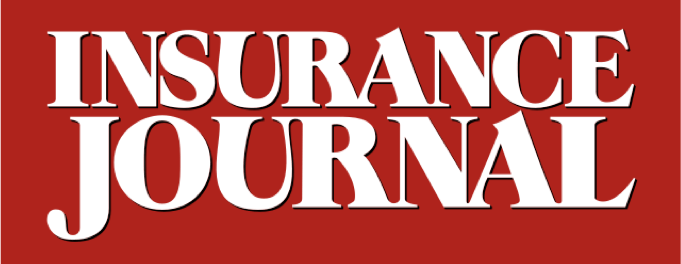Competition among European non-life primary insurers is increasing, despite rising claims inflation, according to S&P Global Ratings in a report on the European insurance sector.
Property/casualty commercial insurers will face more pressure in 2025, said S&P, explaining that margins will likely narrow as the market continues to soften while reinsurance rates are still elevated.
At the same time, however, combined ratios will remain below 100%, said S&P in its report titled “European Insurance Midyear Outlook 2025: Strong Finish Ahead.” (Combined ratios below 100 indicate underwriting profits).
Claims inflation exceeded consumer price index (CPI) inflation in recent years and “will remain the main concern for European primary non-life insurers,” the report said.
Of particular concern, said S&P, is high motor claims inflation, which results from higher costs for car parts and garage repairs.
“In some markets, including the U.K., most motor insurers have already increased premiums to compensate for the rise in claims. In countries such as Germany, however, motor insurers still have some way to go to adjust premium rates,” said the report.
“In addition to claims inflation, primary non-life insurers face high, albeit partially reducing, reinsurance costs and high attachment points,” said S&P. “While diversified groups can absorb any negative effects relatively easily, regionally focused peers must pay significantly higher premium rates than before and retain a relatively larger share of regional natural catastrophe risk exposure on their balance sheets.”
In general, however, the European P/C sector will maintain profitability, despite claims inflation and rising natural catastrophe losses – including the floods in Central, Eastern, and Southern Europe in 2024.
Retail Sector Pricing Differences
S&P expects pricing in the retail sector will differ significantly between motor and home lines, with motor insurance prices declining by about 5%. However, underwriting will remain profitable due to price increases in 2024, the report said.
By contrast, home insurance prices will remain elevated, as insurers struggle to keep up with claims inflation. S&P explained that significant price increases at the end of 2024 may enable insurers to break even, barring extreme weather events.
“Price comparison websites for motor and home insurance reduce operational barriers and lead to commoditization and increased competition from new entrants.”
Geopolitical and Structural Risks
S&P said it does not expect external challenges – such as the geopolitical risks connected to the various military conflicts within and outside of Europe as well as tariff announcements and their associated capital market volatility – to affect the operating performance of rated European insurers and reinsurers.
These geopolitical risks are unlikely to abate in the second half of 2025, but the rating agency forecasts that operating performance will remain in line with first-half (profitable) results.
“While we expect structural risks related to climate change and the transition to net zero will persist over the long term, their adverse effects on the insurance sector are limited since insurers can renew or increase premium rates periodically if necessary,” S&P said.
Cyber Risks
S&P noted that the frequency of cyberattacks has increased since the beginning of the Russia-Ukraine war.
“That said, we are not aware of any successful cyberattacks that would have posed reputational risks to the insurers we rate. We note, however, that cyberattacks against external suppliers also constitute a threat, because insurers have outsourced many functions to third parties,” the report continued.
Regulatory Burdens
S&P said insurers face changes to existing regulations, including the Financial Data Access regulation; the Digital Operational Resilience Act, or DORA, (which addresses cyber risks); and Solvency II — which is adding to their compliance burdens.
“Additionally, they must adapt to new reporting requirements under the Corporate Sustainability Reporting Directive and the European Sustainability Reporting Standards. Internationally active insurance groups also must transition to the Insurance Capital Standard,” the ratings agency continued.
Five Ratings Upgrades
Due to most European insurers’ strong diversification and ample capital surplus against the capital level required to maintain current ratings, S&P’s sector view of the European life and non-life insurance sector is stable, said S&P, noting that its outlooks on 82% of European insurance ratings are stable, after five upgrades year to date.
The report went on to list the insurers that received upgrades from S&P this year:
- Convex group’s entities were upgraded in June to “A” from “A-” due to strong underwriting and operating performance. The outlook is stable.
- Triglav group’s and Sava Re group’s core entities were upgraded in June to “A+” from “A” on improved economic resilience, reflect both companies’ status as government-related entities in Slovenia. The outlooks for both companies is stable.
- Allianz SE’s Italian subsidiary Allianz SpA was upgraded in April to “A+” from “A” with a stable outlook.
- Talanx Primary Insurance Group was upgraded in February to “AA-” from “A+” to reflect enhanced earnings diversification across regions and lines. The outlook is stable.
Only one company – Slovakia-based Novis Insurance Co. – was downgraded to “CCC-” from “CCC” because of further deteriorated credit fundamentals and continued high sensitivity to policyholder lapses. At the time of the downgrade, the rating was on CreditWatch negative.
Topics Trends Carriers Claims Europe Property Casualty
Was this article valuable?
Here are more articles you may enjoy.



 Freight Broker Says $400K in Lobster Meat Stolen in Fictitious Pickup
Freight Broker Says $400K in Lobster Meat Stolen in Fictitious Pickup  Top National Insurance Journal Stories of 2025
Top National Insurance Journal Stories of 2025  Grand Jury Declines to Indict Man in Fatal Shooting at Kentucky State University
Grand Jury Declines to Indict Man in Fatal Shooting at Kentucky State University  Former CEO of Nonprofit P/C Statistical Agent Sentenced for Stealing Millions
Former CEO of Nonprofit P/C Statistical Agent Sentenced for Stealing Millions 

